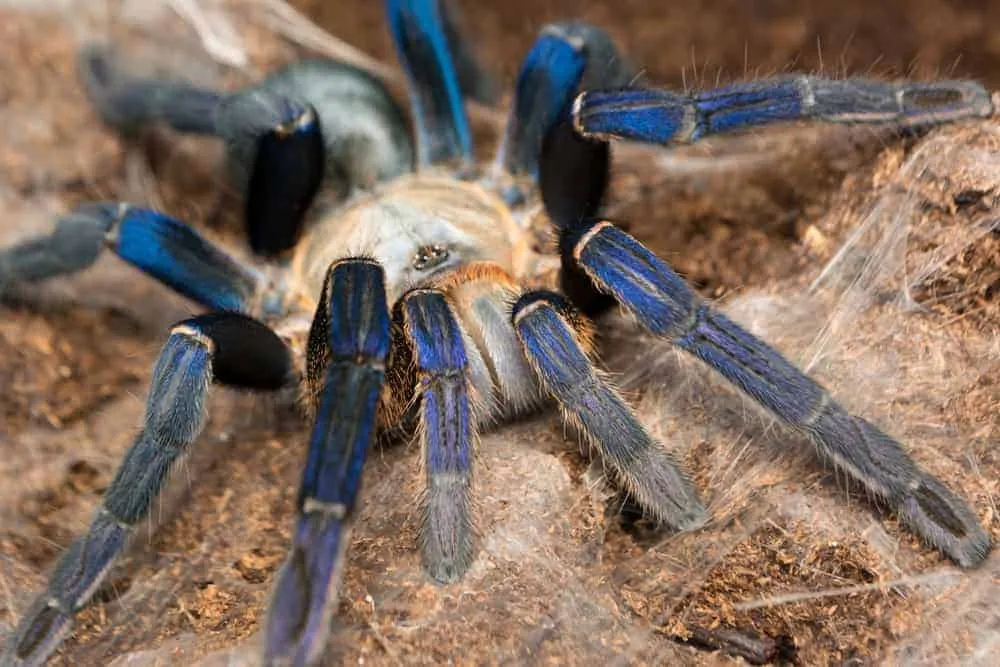Cobalt Blue Tarantula: Top 5 Care Tips
The Cobalt Blue Tarantula (Cyriopagopus lividus) is a stunning and captivating species, known for its vibrant blue legs and striking appearance. However, like all exotic pets, they require specific care to thrive. This guide provides the top 5 essential tips to ensure your Cobalt Blue Tarantula lives a long, healthy, and happy life. By following these guidelines, you can create an ideal environment for your tarantula and enjoy the fascinating experience of owning this beautiful creature. Proper care isn’t just about survival; it’s about allowing your tarantula to exhibit its natural behaviors and thrive in a safe and enriching habitat.
Tip 1: Habitat Essentials
Creating the right habitat is the cornerstone of Cobalt Blue Tarantula care. The enclosure should mimic their natural environment as closely as possible. This includes considerations for size, substrate, and the provision of hiding places. A well-designed habitat reduces stress and encourages the tarantula to display its natural behaviors, such as burrowing and hunting. Ignoring these essentials can lead to a stressed tarantula, which may refuse food or exhibit defensive behaviors. Focusing on these elements ensures the overall well-being and vitality of your pet.
Enclosure Size and Setup
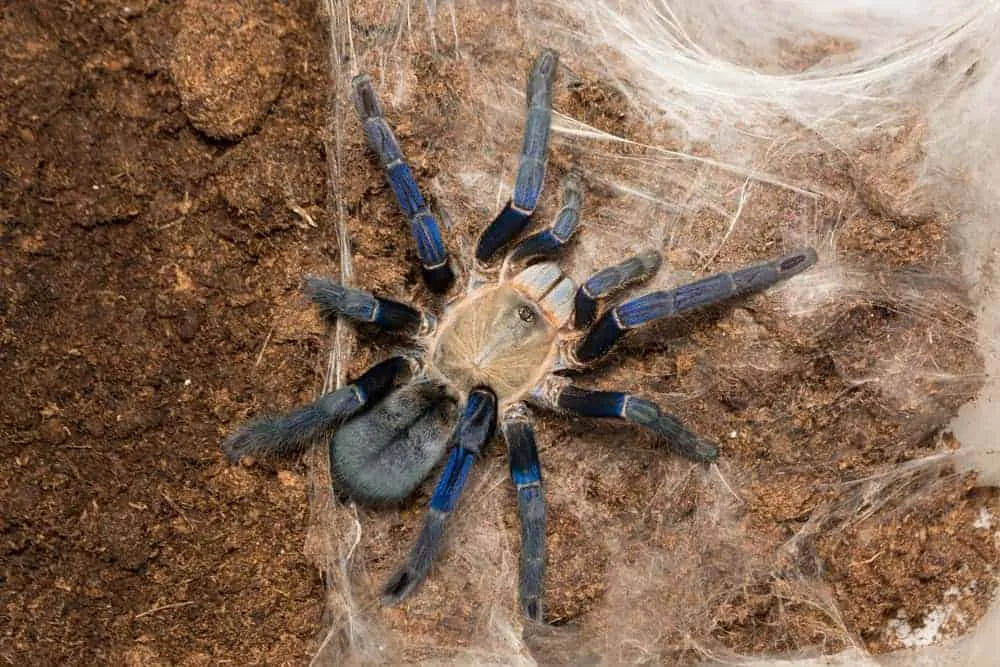
A suitable enclosure size is crucial for your Cobalt Blue Tarantula’s well-being. While they don’t need a vast space, the enclosure should be large enough to allow for movement and the creation of a proper microclimate. A general rule of thumb is to provide an enclosure that is at least three times the tarantula’s leg span in width. This allows for adequate space to move around. A secure lid is a must to prevent escapes. Ensure the enclosure is well-ventilated to prevent the buildup of humidity and mold. Proper ventilation, combined with suitable substrate, is crucial for maintaining the right humidity levels.
Substrate and Hiding Spots
The substrate should be a mix of materials that retain moisture and allows the tarantula to burrow. A mixture of coco fiber, peat moss, and a small amount of vermiculite works well. The substrate should be deep enough to allow the tarantula to burrow, typically 4-6 inches. Providing a secure hiding spot is also essential for reducing stress. This could be a piece of cork bark, a half-log, or even an artificial hide. Ensure the hide is appropriately sized for the tarantula. Regularly check the substrate for mold or excessive moisture and replace it as needed to maintain a healthy environment. (cobalt-blue-tarantula-substrate.webp)
Tip 2: Optimal Temperature and Humidity
Maintaining the correct temperature and humidity levels is critical for the health of your Cobalt Blue Tarantula. These conditions directly impact their metabolism, molting process, and overall well-being. Incorrect levels can lead to dehydration, molting problems, and even death. Regular monitoring and adjustments are essential to provide a comfortable and healthy environment, which ensures the tarantula thrives. The key is to strike the right balance, avoiding extremes that can be detrimental to the tarantula’s health.
Maintaining the Right Climate

The ideal temperature range for a Cobalt Blue Tarantula is between 75-85°F (24-29°C). A small heat mat placed on the side of the enclosure can help maintain this temperature, but ensure it doesn’t directly heat the enclosure from below, which can be dangerous. Humidity levels should be kept between 70-80%. Achieving this requires careful observation and adjustment of the environment. Ventilation is crucial, as excessive humidity combined with poor airflow can lead to mold growth and health issues. The goal is to create a stable environment that closely mimics their natural habitat, promoting optimal health and well-being. (cobalt-blue-tarantula-temperature.webp)
Monitoring Tools
Use a digital thermometer and hygrometer to monitor temperature and humidity levels accurately. These tools provide precise readings, allowing you to make necessary adjustments. Place the thermometer and hygrometer inside the enclosure where they can accurately reflect the conditions. Regular checks are crucial, especially during seasonal changes, to ensure the environment remains stable. This proactive approach prevents drastic fluctuations, thereby minimizing stress on the tarantula. Recording the readings allows you to track trends and make informed decisions about habitat management. (cobalt-blue-tarantula-temperature.webp)
Tip 3: Feeding Your Cobalt Blue Tarantula
Proper feeding is essential for the health and growth of your Cobalt Blue Tarantula. They are voracious eaters, and providing the right food and frequency is critical. The diet needs to be balanced and appropriate for their life stage. Overfeeding can lead to health problems, while underfeeding can stunt their growth and compromise their well-being. Understanding the dietary needs of your tarantula and adjusting your feeding schedule accordingly is fundamental to their care. A well-fed tarantula is a healthy tarantula.
Appropriate Food Types
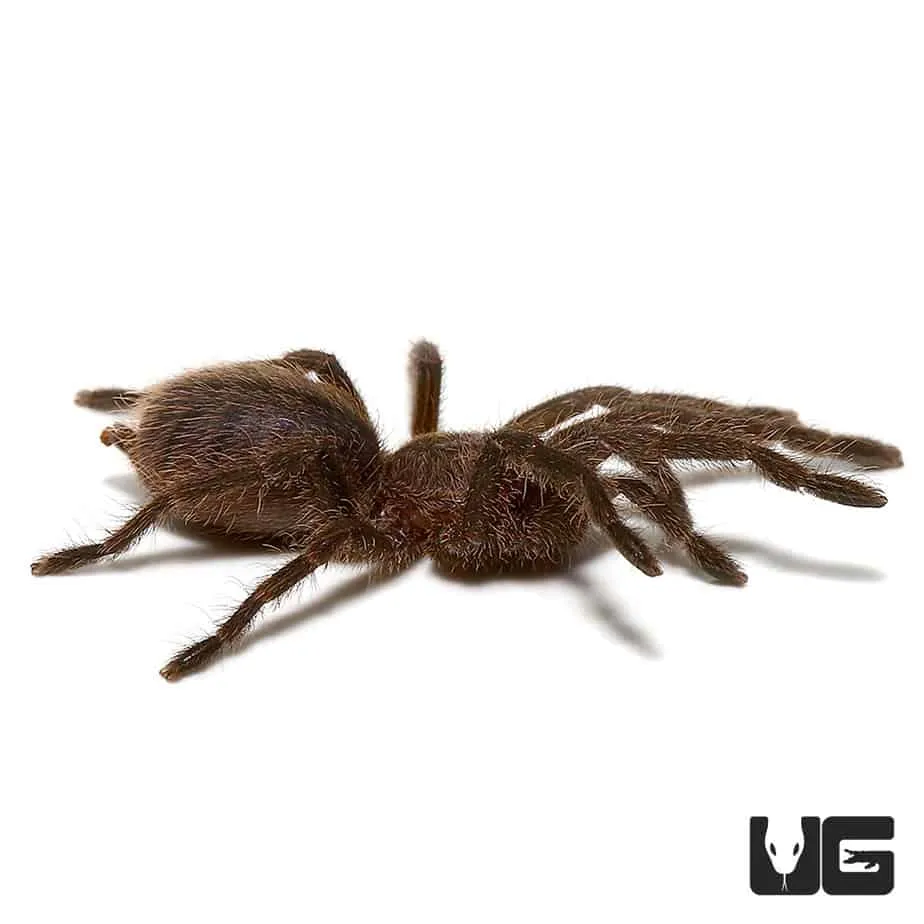
Cobalt Blue Tarantulas primarily feed on insects. Crickets, mealworms, and roaches are all suitable options. The insects should be gut-loaded with nutritious food for at least 24 hours before feeding them to your tarantula. Gut-loading ensures the tarantula receives the maximum amount of nutrients. Avoid feeding wild-caught insects, as they may carry parasites or pesticides. Varying the diet provides a more balanced intake of nutrients. Always remove uneaten prey within 24 hours to prevent stress on the tarantula and prevent the growth of mold or mites. (cobalt-blue-tarantula-feeding.webp)
Feeding Frequency
The feeding frequency depends on the tarantula’s age and size. Spiderlings should be fed every 2-3 days, while juveniles and adults can be fed every 5-7 days. Observe your tarantula’s abdomen; it should be slightly rounded, not overly plump. Overfeeding can stress the tarantula and lead to health problems. During the molting process, the tarantula will typically refuse food. Remove any uneaten food during this period. Always ensure a fresh water source is available, even during the molting cycle. Adjust the feeding schedule based on the tarantula’s individual needs and behavior.
Tip 4: Water and Hydration
Water is essential for all living creatures, and Cobalt Blue Tarantulas are no exception. Providing a constant source of fresh, clean water is crucial for hydration and overall health. Dehydration can lead to serious health issues, including difficulty molting and even death. Maintaining proper hydration also supports the tarantula’s internal functions, ensuring they can effectively process food and eliminate waste. Proper hydration goes hand in hand with maintaining correct humidity levels within their enclosure. (cobalt-blue-tarantula-water.webp)
Providing Fresh Water
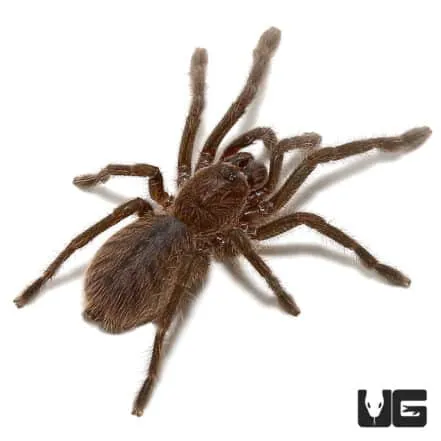
Provide a shallow water dish filled with fresh, clean water at all times. The dish should be shallow enough to prevent the tarantula from drowning. Use a sponge or small pebbles in the water dish to help prevent drowning and make it easier for the tarantula to drink. Change the water at least twice a week, or more often if it becomes soiled. Make sure the water is chlorine-free. Tap water should be dechlorinated before use. Clean the water dish thoroughly during each water change to prevent bacteria growth.
Misting and Humidity
In addition to a water dish, misting the enclosure can help maintain the necessary humidity levels. Mist the enclosure lightly once or twice a week, depending on your local climate and the ventilation of the enclosure. Avoid over-misting, as this can lead to mold growth. Monitor the humidity levels using a hygrometer. Ensure the substrate is slightly moist, but not waterlogged. Misting should be done strategically, focusing on the substrate and sides of the enclosure. (cobalt-blue-tarantula-humidity.webp)
Tip 5: Handling and Safety Precautions
Handling Cobalt Blue Tarantulas, or any tarantula, should be approached with caution. While they are not typically aggressive, they can bite if they feel threatened. Bites are not usually life-threatening, but they can be painful and cause localized reactions. Understanding the tarantula’s behavior and practicing safe handling techniques is crucial to minimize the risk of bites and ensure the safety of both the owner and the tarantula. Always prioritize the well-being of the tarantula and avoid unnecessary handling. (cobalt-blue-tarantula-handling.webp)
Safe Handling Practices
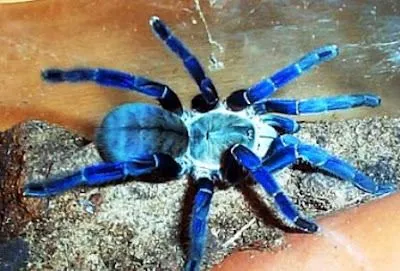
If you choose to handle your Cobalt Blue Tarantula, do so with extreme care. Handle them close to the ground or a soft surface to minimize the risk of injury if the tarantula falls. Never handle them if they are showing signs of stress, such as defensive postures or erratic movements. Avoid direct contact with their fangs. Wash your hands thoroughly before and after handling. Use a soft brush or a container to coax the tarantula if needed, rather than trying to grab it directly. Always be patient and respectful of the tarantula’s space.
Understanding Tarantula Behavior
Observe your tarantula’s behavior to understand its mood and avoid unnecessary stress. If the tarantula raises its front legs in a defensive posture, it’s a clear sign that it feels threatened. Avoid any further interaction at that moment. Learn to recognize the signs of a tarantula that is about to molt, as they are particularly vulnerable during this period. Avoid handling during molting. Understanding tarantula behavior is key to building a safe and enjoyable relationship with your pet and ensuring its long-term well-being. (cobalt-blue-tarantula-hiding-spot.webp)
